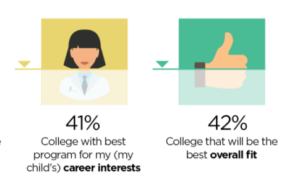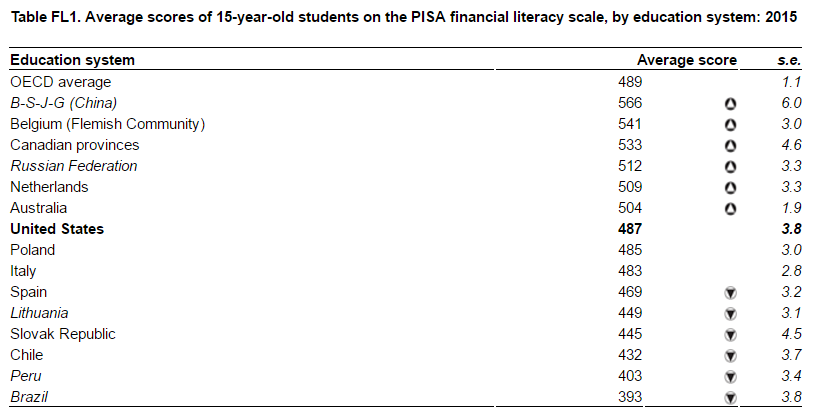 Congressional negotiators have announced an agreement on the long overdue reauthorization of the Elementary and Secondary Education Act (ESEA)— the law formerly known as No Child Left Behind (NCLB). Due for reauthorization since 2007, lawmakers have struggled to find consensus for how to address NCLB’s most readily apparent flaws while honoring its long legislative legacy rooted in the civil rights movement.
Congressional negotiators have announced an agreement on the long overdue reauthorization of the Elementary and Secondary Education Act (ESEA)— the law formerly known as No Child Left Behind (NCLB). Due for reauthorization since 2007, lawmakers have struggled to find consensus for how to address NCLB’s most readily apparent flaws while honoring its long legislative legacy rooted in the civil rights movement.
As we shared earlier this summer, both the House and the Senate passed respective bills to reauthorize ESEA. Since that time both Chambers have been working on a bipartisan and bicameral basis to develop a framework agreement that would serve as the basis for a compromise between the two proposals. Last week that framework was announced along with the creation of a formal conference committee— a move that has been exceptionally rare over the past decade.
ESEA conferees were announced last week and met twice before approving this framework (along with a few amendments) last Thursday by a margin of 39-1. A summary of this framework agreement— now known as the “Every Child Succeeds Act†or ESSA— can be found here.
It is important to note that this agreed upon framework must now be turned into a final bill and Congressional staff are now busy translating the aspects of this agreement into formal legislative text. That text must then be approved by both Chambers of Congress and signed into law by the President. The conference report and final text of ESSA is expected to be available on November 30th. The House is expected to consider the legislation shortly after this followed by the Senate. Lawmakers are aiming for final passage before the end of this December.
While the official legislative text has not been finalized, ESSA seeks to significantly roll-back the federal role in K-12 education by providing states broad authority (and flexibility) for how to implement the law. A broad overview of the agreement’s main contours can be found here.
NASDCTEc will provide a detailed analysis of ESSA’s CTE-related provisions of interest once it has been finalized and will continue to keep the CTE community abreast of this ongoing reauthorization effort.
Congress Passes Budget Agreement Providing Temporary Relief from Sequester Caps
As we shared previously, Congress passed and the President signed into law the “Bipartisan Budget Act of 2015†(BBA) which provides $80 billion in sequester relief over the next two fiscal years by temporarily raising current limits on federal spending (known as sequester caps) through FY 2017 for both defense and non-defense discretionary programs.
The deal also suspends, but does not raise the nation’s “debt ceiling†through March 15, 2017 putting the twin issues of federal spending and the nation’s debt limit off until after the upcoming 2016 presidential election.
Currently the federal government is operating on a “continuing appropriations resolution†(CR) which temporarily extended FY 2015 funding levels into the current 2016 federal fiscal year which began on October 1st of this year. This CR expires on December 11th, 2015 and Congress must act before that time to pass funding legislation to avert another government shutdown.
Although the BBA agreement provides an overall increase for how much funding is available to Congressional appropriators for federal Fiscal Years 2016 and 2017, those same lawmakers must still pass separate legislation designating specific dollar amounts for individual agencies and departments which administer federal programs such as the Carl D. Perkins Act (Perkins).
That process is currently underway and ahead of it NASDCTEc and the Association for Career and Technical Education (ACTE) sent a letter to the Chairmen and Ranking Members of the House and Senate Appropriations committees urging them to restore Perkins funding to at least pre-sequestration levels or $1.123 billion for the law’s basic state grant program.
As a reminder Perkins derives its funding from the Labor-HHS-ED appropriations bill whose subcommittee has been given an overall allocation of $161.69 billion—a $5 billion increase over the FY 2015 level. That extra $5 billion in the FY 2016 Labor-HHS-ED 302(b) allocation must now be divided up among many programs, including Perkins, that are all competing for a portion of these newly available funds.
In an effort to ensure that Perkins funding is restored through this process, please be sure to contact your member of Congress to remind them about the importance of investing in CTE. As the federal appropriations process continues and the December 11th deadline draws closer, be sure to check back here for more updates on Perkins funding.
Postsecondary CTE Bills Introduced in the House
Earlier this month two separate proposals to boost federal financial aid support for postsecondary CTE programs were introduced in the House.
The first of these, known as the Jumpstarting our Businesses by Supporting Students (JOBS) Act, was introduced by Reps. Cedric Richmond (D-LA) and Brenda Lawrence (D-MI). The JOBS Act is a companion bill to an earlier Senate proposal sponsored by Sens. Tim Kaine (D-VA) and Kelly Ayotte (R-NH). The legislation aims to change current program edibility requirements for the federal Pell grant program to serve more students who are enrolled in qualifying shorter-term postsecondary CTE programs.
The CTE Opportunity Act, another companion bill to an earlier Senate proposal, was recently introduced by Reps. Tammy Duckworth (D-IL) and Ryan Costello (R-PA). House CTE Caucus co-Chairs Reps. Glenn “GT†Thompson (R-PA) and Jim Langevin (D-RI) also cosponsored this bill which would increase access to federal financial aid available under Title IV of the Higher Education Act for qualifying shorter-term postsecondary CTE programs. Read more about the legislation here.
NASDCTEc supported both of these proposals and looks forward to the reauthorization of the Higher Education Act where this policy recommendation and many more can be fully realized.
Odds & Ends
- The Obama Administration recently announced a new experimental site program (made available under HEA) that will expand eligibility for the federal Pell grant program to students who are concurrently or dually enrolled in postsecondary coursework. The U.S. Department of Education (USDE) is currently inviting applications from qualifying programs for the 2016-17 academic year and hopes to support up to 10,000 students. More here.
- USDE’s Office of Career, Technical, and Adult Education (OCTAE) recently announced a new initiative titled “Potential Role of Secondary Career and Technical Education Programs in Preparing Students for Apprenticeship Programsâ€. The National Career Technical Education Foundation (NCTEF) has been selected to provide support to this project and more on this announcement can be found here.
- USDE has also recently unveiled a new transparency agenda aimed at improving the postsecondary accreditation system. Read more about the effort here.
- The Obama Administration announced more than $375 million in public and private funding to support “Next-Generation†high schools—an effort to fundamentally redesign the high school experience by focusing on many of the elements contained in a high-quality CTE program of study. More on the announcement here.
Steve Voytek, Government Relations ManagerÂ
 The spring of 2020 saw postsecondary institutions close out semesters remotely due to COVID-19 (Coronavirus). The transition to distance learning was quick, forcing postsecondary systems and colleges to shift lesson plans and instruction methods in real-time. As the spring semester comes to a close, many colleges are expecting that the summer and fall semesters (at a minimum) will be delivered remotely as well- either in entirety or in some kind of hybrid.
The spring of 2020 saw postsecondary institutions close out semesters remotely due to COVID-19 (Coronavirus). The transition to distance learning was quick, forcing postsecondary systems and colleges to shift lesson plans and instruction methods in real-time. As the spring semester comes to a close, many colleges are expecting that the summer and fall semesters (at a minimum) will be delivered remotely as well- either in entirety or in some kind of hybrid. 



